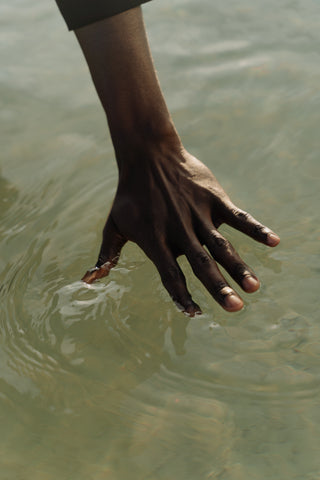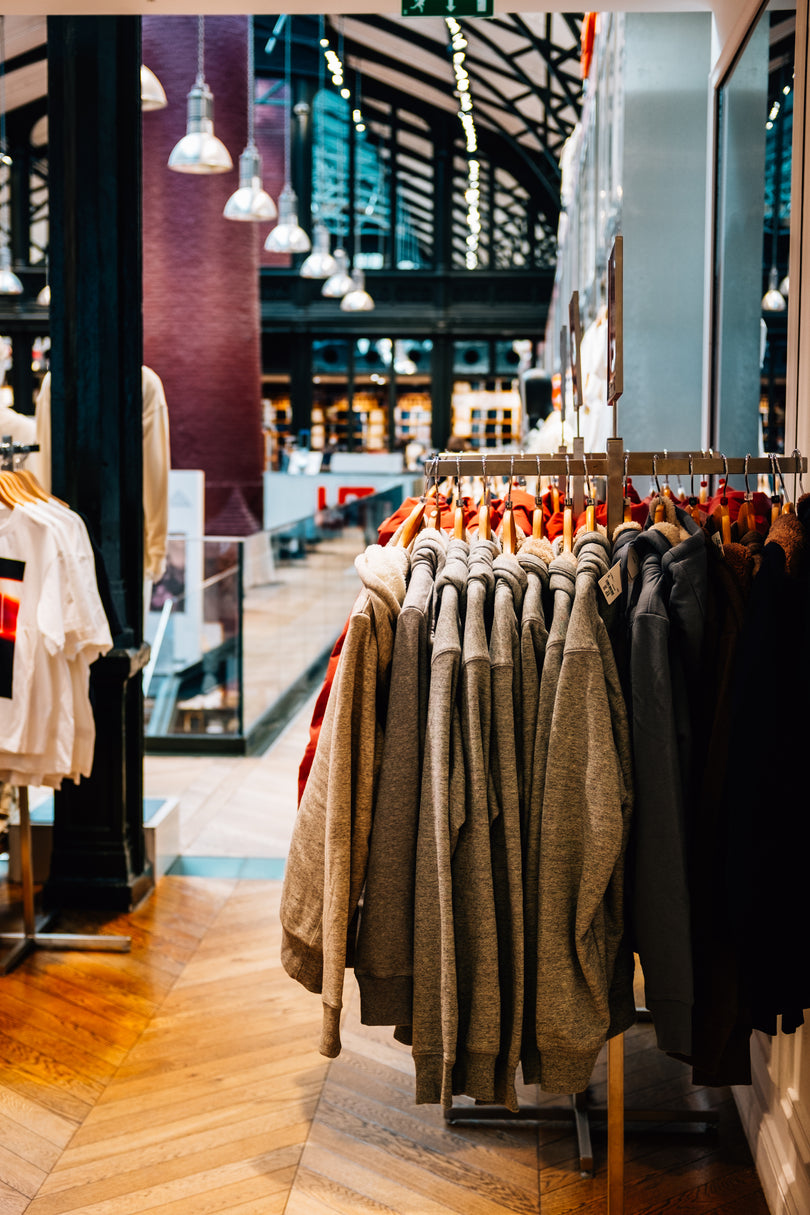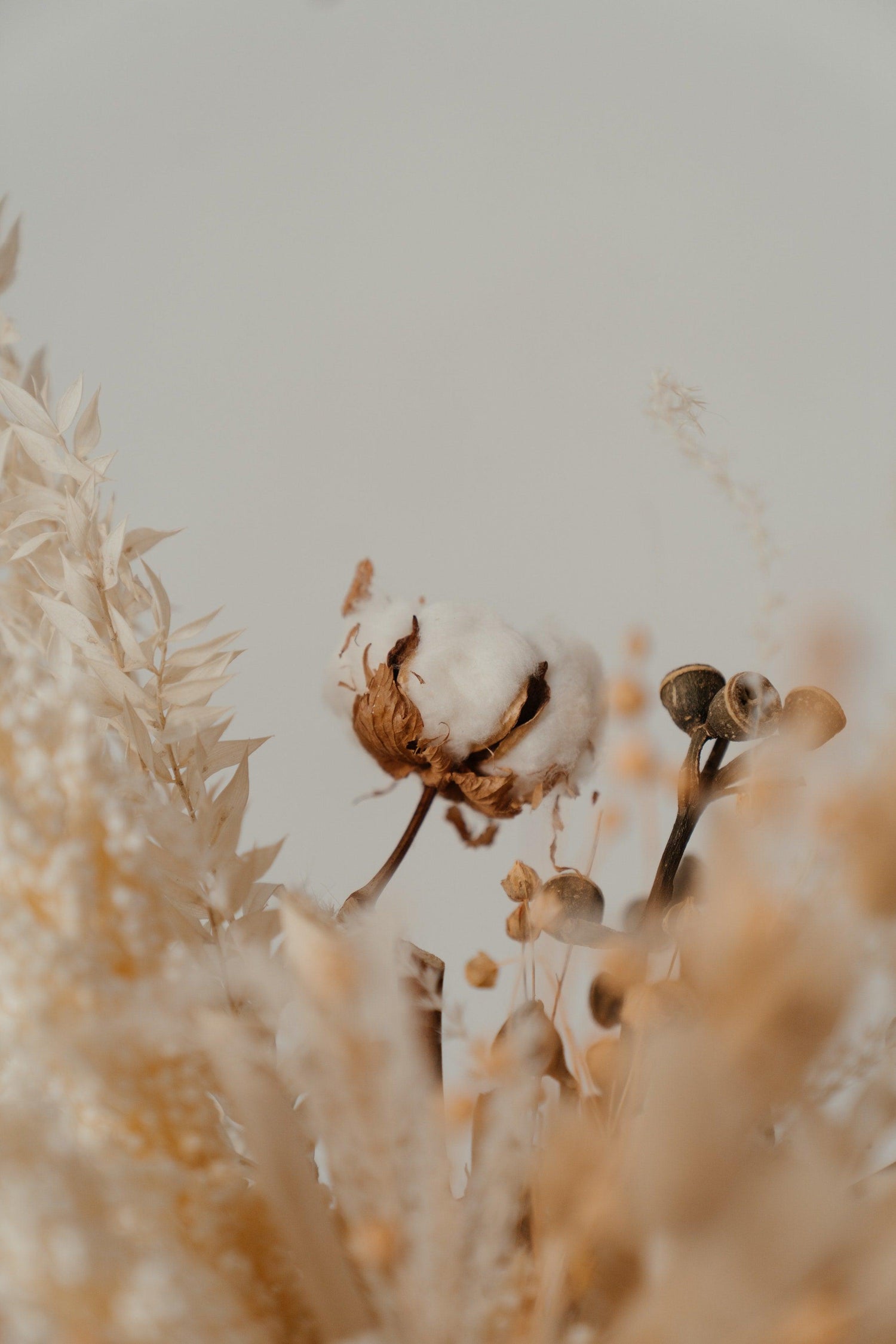Fashion’s hefty water use is the industry’s worst kept secret, but despite increasing concerns from campaigners and consumers alike, little has been done so far to tackle the issue - despite it being a critical step toward a sustainable fashion industry.
The current state of fashion’s water pollution can be seen in the BoF Sustainability Index 2022; of their top performing 15 companies, none scored higher than 56/100 in the “water & Chemicals’ section, which measured their efforts to reduce waste use and eliminate harmful pollution. Although frustrating, it’s hardly surprising given the magnitude of the problem:
An explanation of fashion’s water pollution
We rely on water throughout the stages of a garment’s lifecycle; from growing the very material it’s made of to the act of washing it to rehang in our wardrobes, but we rarely stop to think about how quickly the industry’s water usage accumulates.
Take cotton for instance. It may be a common staple in the fashion industry, but it’s also widely known as a ‘thirsty’ crop, requiring an average of 10,000-20,000 litres of water to cultivate just one kilogram of raw cotton depending on where it is grown. This problem can be exacerbated when cotton is grown in non-rain-fed areas. Around half of global cotton production requires additional irrigation, which can add stress on local water supplies. Even after the plants have been watered, the runoff of pesticides, fertilizers, and minerals from cotton fields can cause further problems by contaminating rivers, lakes, wetlands, and underground aquifers in the local area. Efforts have been made to improve fast fashion’s environmental impact on cotton farming by promoting BCI or organic alternatives, but even these have their specific drawbacks - like lower crop yield.
The problem only continues to get worse after the material has been grown. The traditional textile dyeing process is one of the biggest contributors to fashion’s water pollution, as the toxic chemicals used often end up in nearby water sources. These hazardous chemicals know no boundaries; they can be transported by ocean currents or in the air, and some can remain in the final products and are washed out into local wastewater systems when consumers wash their clothes. Greenpeace launched a campaign in 2011 that called for better waste management, but their investigations ten years on found little to no change; whilst some progress had been made towards zero-discharge of hazardous materials in fashion’s supply chain, “more work by the entire industry needs to be done” by both ethical and fast fashion brands alike.

Compared to the above issues household washing may seem relatively harmless in terms of water usage, but the hidden problem lies in plastic pollution. The washing of synthetic textiles is ‘one of the primary sources of microplastics in the aquatic environment’, and is now a growing part of our own food chain as well as aquatic life, posing potential health risks.
Frustratingly, we may never be able to calculate the full scope of fashion’s water pollution because of the overlap between industries and the neverending question of where to draw the line - for example, do we tally pollution created by shipping (carrying a variety of items, including textiles) to the transport or fashion industry?
Despite the argument of accountability, the overall conclusion is the same: fashion’s water usage is a significant issue in desperate need of a solution.
What can be done?
The good news is that brands can alter their production process to cut down on wastewater and chemical pollution. Ethical fashion companies can turn to better materials, like BCI or organic cotton, to reduce the harmful impacts of crop production, or use technology to improve stages of the production process. For example, compared to traditional dyeing methods, direct printing is a newer technology that utilises a printer to apply the ink to textiles directly, thereby using less water and waste than alternative methods.
At Bee & Alpaca, we use this technology on our accessories and in parts of our main collection. Much of the deadstock material we save is white, so wherever possible we use direct printing to save the white fabrics and bring colour to our collections.
As with most efforts toward a sustainable fashion industry, consumers can also play their part to encourage change. Other than supporting ethical fashion brands, taking steps to improve your clothes wash can make a significant difference; simply using a Guppy Bag can reduce the number of microfibres released.
You can also try this tip from our blog ‘8 Easy Sustainable Fashion Tips to Try Today’: “Having a quick refresher of what each [washing] symbol means can help avoid future disasters and prolong the life of your clothes. The same can be said for using stain remover and clothing softener, as well as double-checking you’re washing clothes only when needed…” Many of us don’t realise that a large part of fashion’s water usage and subsequent waste happens post-production and especially during washing cycles, so ensuring clothes are only washed when very dirty is key, and trying to keep them fresh for longer - by using spot treatments, for example - is a great way to reduce personal water waste.



